Call Us: (920) 233-1540
Large Vein Treatment
FREE VEIN SCREENINGS ALL DAY LONG NOW!
Wait no longer. Call us for a complimentary vein screening. If vein disease may be present, you have the option to proceed with an insurance covered ultrasound on another day to get a clearer picture of your leg health. You will not believe how good you will feel after vein treatment. Call 920-233-1540 now for a vein screening – an $100 value.
Veins are the blood vessels that return blood to the heart from the body. To overcome the force of gravity, veins use one-way valves which open to allow blood flow to the heart, and close to prevent “reflux” of blood back to the body. When these valves fail to function, or if the vein is damaged so the valves do not completely close, blood can pool in the vein, causing a variety of vein complications.
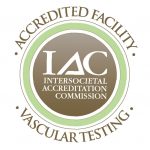 The accredited Vein Center at Fox Valley Plastic Surgery expertly treats all vein issues. Some practices have a doctor, instead of a registered vascular technician, perform the ultrasounds. FVPS never does this because a registered vascular sonographer is vastly superior to a doctor in his/her level of ultrasound expertise of the veins. Our skilled surgeons and technicians are helping women and men from places such as Green Bay, Appleton, Fond du Lac, Sheboygan, Milwaukee, Madison and upper Michigan, perfect their personal Renaissance. Contact the Vein Center at (920) 233-1540 to request your vein consultation.
The accredited Vein Center at Fox Valley Plastic Surgery expertly treats all vein issues. Some practices have a doctor, instead of a registered vascular technician, perform the ultrasounds. FVPS never does this because a registered vascular sonographer is vastly superior to a doctor in his/her level of ultrasound expertise of the veins. Our skilled surgeons and technicians are helping women and men from places such as Green Bay, Appleton, Fond du Lac, Sheboygan, Milwaukee, Madison and upper Michigan, perfect their personal Renaissance. Contact the Vein Center at (920) 233-1540 to request your vein consultation.
Identifying Vein Disease
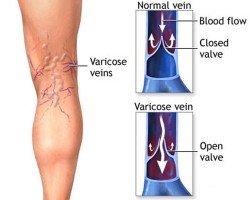 Approximately half of the population has some form of vein disease, with varicose veins in particular affecting between 15-25% of all adults. Also, women are twice as likely as men to have them. Heredity is the single most important cause of vein disease: about 70% of all patients with varicose veins have parents with the same condition. Pregnancies are also a contributing cause of vein disease, as are age, obesity, and jobs which require long periods of standing.
Approximately half of the population has some form of vein disease, with varicose veins in particular affecting between 15-25% of all adults. Also, women are twice as likely as men to have them. Heredity is the single most important cause of vein disease: about 70% of all patients with varicose veins have parents with the same condition. Pregnancies are also a contributing cause of vein disease, as are age, obesity, and jobs which require long periods of standing.
Fortunately, we can see most vein disease by observing the size and color of the vein at the skin’s surface. In some cases, however, the diseased vein may be deeper in the body and not visible through the skin. Many patients with vein disease experience cramping, aching, burning, itching, soreness, or “restless” legs. If you have experienced any of these symptoms, our physicians can easily perform an ultrasound test to determine if you have vein disease.
Types of Vein Disease
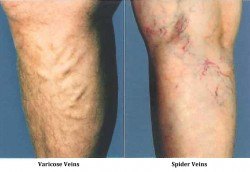 Spider veins are the small, thread-like colored veins that are most often seen on the surface of the skin. While many people seek treatment for spider veins for cosmetic reasons, spider veins also can cause substantial discomfort, requiring therapy.
Spider veins are the small, thread-like colored veins that are most often seen on the surface of the skin. While many people seek treatment for spider veins for cosmetic reasons, spider veins also can cause substantial discomfort, requiring therapy.
Varicose veins are the large, “rope-like” veins which are often 1/4” or larger in diameter. Varicose veins generally grow in size over time and can also result in substantial pain and complications if not treated.
Meet Our Surgeons
Dr. David Janssen and Dr. William Doubek combine experience, refined surgical techniques, and artistry to produce beautiful results for their plastic and reconstructive surgery patients.
Treatment Options
The following are common treatments performed for vein disease:
Compression Stockings
Although they will not eliminate varicose veins, compression stockings can help relieve vein disease symptoms. The compression stockings will assist the leg in the pumping of blood back to the heart.
Sclerotherapy
Used commonly for spider veins and small varicose veins, sclerotherapy involves injecting a small volume of a liquid into the diseased vein. The liquid causes the lining of the vein to seal shut, eliminating the vein completely. Sclerotherapy is a brief procedure, requiring no anesthesia.
Endovenous Laser Therapy
During endovenous laser therapy, the provider inserts a thin laser fiber into the diseased vein, generally through a small puncture in the leg above where the visual symptoms appear. Absorption of laser light occurs in water within the vein and vein wall. Then the laser heat contracts and collapses the vein wall. This halts the formation of future varicosities and results in complete vessel closure. With blood flow to the insufficient vein interrupted, the pooling and bulging that causes varicose veins will begin to subside. The body absorbs the ablated vein, and blood circulation redirects itself to healthy veins.
The provider can perform endovenous laser therapy in the office in less than one hour, and can treat many different sized veins because of the adjustable laser beam. In just a few treatment sessions, the procedures can improve significantly the appearance of skin.
 Radiofrequency (RF) Ablation
Radiofrequency (RF) Ablation
RF therapy is a minimally invasive alternative to traditional vein stripping. The Venefit™ procedure uses a segmental ablation technique, which incorporates the ClosureFast catheter to heat a 7 cm vein length in one 20-second interval. After the provider treats each segment, the provider re-positions the catheter to the next segment, and repeats the process until the entire length of the diseased vein has been sealed.
The catheter delivers uniform, consistent heat to each segment. This causes the vein to shrink, collapse and seal shut. Once the provider has sealed the vein, healthy veins take over and redirect blood flow. The provider can perform the RF procedure under local anesthesia in the office, and most patients return to normal activity in a day.
Varithena
A new class of treatment which is non-thermal and non-tumescent. This type of treatment has less risk of damage to the vein than thermal techniques, but most insurance companies do not cover it. Varithena is a foam that flows into the area and causes the problem vein to collapse. This allows blood flow to shift to nearby healthy veins. When it comes in contact with blood, the blood deactivates the foam.
Vein treatments are improving with more options for non-thermal, non-tumescent procedures such as VenaSeal™, which uses medical adhesive to close the vein.
Other modalities for vein treatment are available. Our physician will determine the best course of treatment for each patient, and outline an individual treatment plan for each patient. Almost all procedures are done in the office under local anesthesia. This keeps costs down, and gets patients back on their feet faster than getting the procedures done in a hospital setting under general anesthesia.
With many options to treat vein disease, it is important to contact the Vein Center at Fox Valley Plastic Surgery at (920) 233-1540 to request a personal vein consultation.
When a Vein is Closed, Where Does the Blood Go?
Because there are many veins in the leg, the blood that would have flowed through the closed vein simply flows through other healthy veins. The loss of the diseased vein is not a problem for the circulatory system.
Risks of Untreated Varicose Veins
Some people believe that varicose veins are only a cosmetic problem and are not a priority when they talk with their doctors. However, varicose veins can be a real medical concern. Varicose veins generally worsen over time. Initially, individuals will experience slight pain and restlessness in the diseased leg. If untreated, this pain will increase and result in limitations in walking and cramps during sleep. Eventually, varicose veins can lead to sores on the foot, blood clots, and tissue loss, which can lead to serious problems that might require hospitalization.
Real Patient Results
We love to see the smiles on our patients' faces when they look and feel their best. See the results for yourself.
Photo Gallery Request a ConsultationComplications of Vein Treatment
Fortunately, RFA, EVLA and sclerotherapy rarely cause any serious complications when properly performed. Common minor complications of these procedures include bruising, mild itching, tingling, tenderness and tightness in the treated leg for up to two weeks after the treatment.
“Don’t hesitate. The surgery is worth it. The quality of life is unbelievable. I feel better at 45 than I did at 30!” Patient 31014, age 42.
Treatment Plan
While multiple treatments may be necessary, most patients will see some result after the first treatment. Full results develop over 3 to 6 months.
Nationwide, the effective 3-year closure rate of vein procedures is 93%, that is, 93% of patients do not experience a re-occurrence of the vein problem after three years. The Vein Center at Fox Valley Plastic Surgery has an impressive continued closure rate of 97.1% after three years. Where patients get their vein procedures does make a difference in the long-term success of the procedure. 4% is statistically significant enough to consider having your procedure done at Fox Valley Plastic Surgery. Here at The Vein Center, a registered vascular technician provides continuity of care throughout the entire treatment plan.
Pricing
 Vein treatment is inherently expensive due to the amount of appointments required and the technologies involved. Fortunately, most insurance companies cover the treatment of vein disease, which is associated with substantial pain and other complications. However, some individual insurance companies may limit the types of therapy which are covered. FVPS will check to see which procedures are covered by insurance. However, the patients are still ultimately responsible for any copays, deductibles, and any other non-covered insurance charges.
Vein treatment is inherently expensive due to the amount of appointments required and the technologies involved. Fortunately, most insurance companies cover the treatment of vein disease, which is associated with substantial pain and other complications. However, some individual insurance companies may limit the types of therapy which are covered. FVPS will check to see which procedures are covered by insurance. However, the patients are still ultimately responsible for any copays, deductibles, and any other non-covered insurance charges.
Cash vs. Insurance
- Patients with a high deductible insurance plan, may feel they will never meet the deductible and prefer to pay a cash price. We offer special pricing for patients who elect to personally pay for a procedure. The insurance allowed amount is generally much higher than the out of pocket cost.
- Some patients want a procedure done right away and do not want to wait for a prior authorization decision from their insurance plan. Paying for the procedure out of pocket accomplishes this issue.
- Others do not have insurance. Therefore, we offer special pricing for non-insurance billed procedures. However, patients must make full payment prior to a procedure.
- Patients who wish to pay for their procedures out of pocket, need to waive their right to insurance coverage for their procedures.
Patients without insurance or who do not wish to use insurance, should call for an individual consultation to get a custom quote for vein treatment.
Real Patient Story
 Read about Paul’s experience in our Vein Center and other real patient stories in Real Patient Stories. As an avid athlete, Paul had a heart and muscles like someone half his age. His limiting factor were his legs. As the aching and exhaustion grew worse, he discovered that he had venous reflux disease, a highly treatable disease for the accredited Vein Center at Fox Valley Plastic Surgery.
Read about Paul’s experience in our Vein Center and other real patient stories in Real Patient Stories. As an avid athlete, Paul had a heart and muscles like someone half his age. His limiting factor were his legs. As the aching and exhaustion grew worse, he discovered that he had venous reflux disease, a highly treatable disease for the accredited Vein Center at Fox Valley Plastic Surgery.
Insurance Coverage Test
In order for insurance to cover the cost of vein treatment, most insurance companies require physicians to classify the severity of venous disease. The classification for venous disease is called the CEAP (Clinical, Etiologic, Anatomic, Pathophysiologic) Classification, which has 6 categories:
1. Reticular and spider veins
2. Varicose veins
3. Varicose veins and leg swelling
4. Varicose veins and evidence of venous stasis skin changes
5. Varicose veins and a healed venous stasis ulceration
6. Varicose veins and an open venous ulceration
In conjunction with the CEAP category, patients are responsible for rating certain components, such as pain/discomfort, pigmentation, inflammation, etc. on a score of mild (1), moderate (2), or severe (3) on the Venous Clinical Severity Score (VCSS). The VCSS score is physician reported, but symptoms are scored based on patient response to subjective questions. The score is designed so that greater emphasis is given to more severe disease, which is more likely to change in response to therapy. Ten descriptors are each graded 0-3. The total score is the sum of the component scores.
The higher the CEAP category and VCSS score, the greater chance that insurance will cover the vein treatments. In answering VCSS questions, it is imperative that patients answer truthfully, but not to minimize their symptoms. It will lower the score and may make the vein treatments ineligible for insurance coverage.
Getting Started
Call (920) 233-1540 or go online to request your complimentary vein screening during the day.
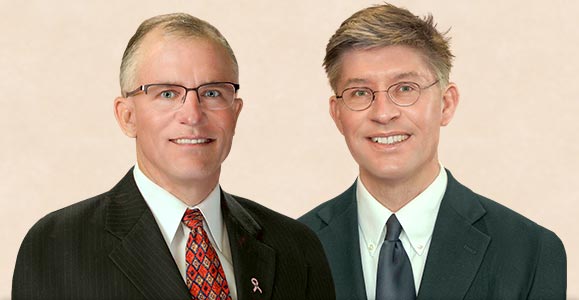
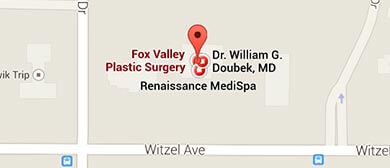
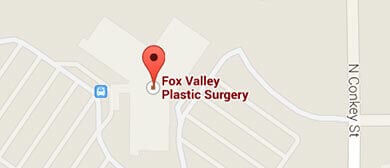
Oshkosh, WI (920) 233-1540